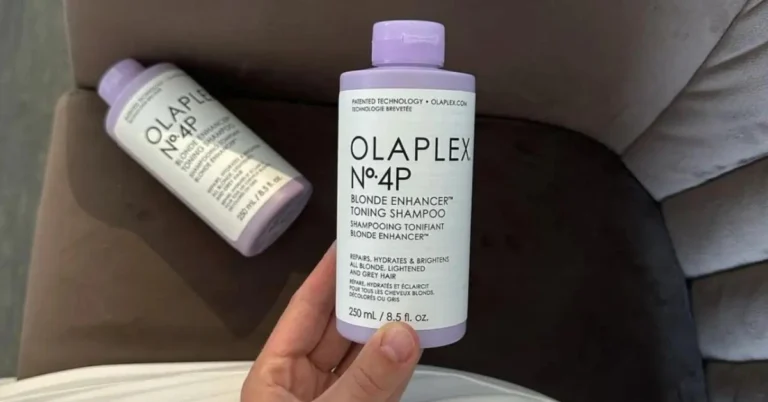Get ready, skincare lovers! Today, we’re going to uncover the secret behind achieving the most glowing skin you’ve ever experienced. We’ll delve into the fascinating realm of azelaic acid and salicylic acid, two formidable contenders competing for the ultimate position.
Amidst the overwhelming sea of skincare acids, we understand the frustration and confusion of finding the perfect product that addresses your unique concerns. But fear not! We are here to be your trusted guides on this transformative journey.
Now, let’s unveil the game-changing solution: combining both azelaic acid and salicylic acid is the ultimate winning formula. Yes, you heard it right! By harnessing the collective powers of these exceptional acids, you can unleash a revolution in your skincare routine.
Azelaic acid, the gentle giant, caters to even the most sensitive skin types, banishing redness, inflammation, and even mild cases of acne with its enchanting touch. On the other hand, salicylic acid, the potent exfoliant, fearlessly confronts moderate to severe acne, offering a path to clearer, healthier skin.
However, we must proceed with caution, as salicylic acid’s potent nature may potentially irritate certain skin types.
In the following paragraphs, we will unveil the unique benefits each acid brings to the table, discerning who can harness their powers most effectively. Additionally, we will guide you on the safe incorporation of these acids into your daily skincare routine, ensuring optimal results without compromising your skin’s well-being.
Table of Contents
Azelaic Acid

When it comes to azelaic acid vs salicylic acid, you might be wondering which one should take center stage in your skincare routine. Let’s dive into the world of azelaic acid and explore its properties, benefits, and common uses.
Properties and Benefits
Azelaic acid is a naturally occurring substance found in grains like wheat, rye, and barley. This gentle ingredient is known for its anti-inflammatory and antimicrobial properties, making it suitable for sensitive skin. It’s an effective treatment for various skin conditions, working its magic by helping to fade acne scars, hyperpigmentation, and redness caused by inflammation.
Moreover, azelaic acid assists in regulating skin cell production, unclogging pores, and preventing future breakouts. It can also inhibit the over-production of melanin, which is responsible for dark spots and uneven skin tone.
Common Uses
You’ll typically find azelaic acid in various skincare products, including creams, gels, and cleansers. It’s often available in a 10% concentration, but higher concentrations may be prescribed by a dermatologist for specific skin problems.
Azelaic acid is commonly used to treat conditions like acne, rosacea, and melasma, thanks to its anti-inflammatory and skin lightening properties. When incorporating this versatile ingredient into your skincare regimen, it’s important to do so gradually, allowing your skin time to adjust.
Remember, while azelaic acid has numerous benefits, it’s essential to consult with a dermatologist or skincare professional to ensure it’s the right choice for your unique skin needs.
Salicylic Acid

If you’ve ever struggled with choosing between azelaic acid vs salicylic acid for your skincare needs, you’re in the right place. In this section, we will explore the properties, benefits, and common uses of salicylic acid, a popular and effective skincare ingredient.
Properties and Benefits
Salicylic acid is a powerful beta hydroxy acid (BHA), known for its ability to penetrate and unclog pores. With exfoliating properties, it helps slough off dead skin cells, keeping your skin smooth and radiant.
As an anti-inflammatory agent, salicylic acid aids in reducing redness and irritation associated with acne and other skin conditions. When used consistently, this wonder ingredient can help improve your skin’s texture and appearance.
BENEFITS OF SALICYLIC ACID 😱
— nananinie (@nniena_) August 24, 2020
📌highly anti-inflammatory
📌calming down red, inflamed and ‘angry’ skin
📌 acne-fighting
📌 unclogged pores
📌 Best in removing dirts
📌 Removes blackhead & whitehead as well!
So what are you waiting for? Come and take me home
RM 59 ✨100ML pic.twitter.com/IWiKL3R8H9
Common Uses
- Acne Treatment: Salicylic acid is a popular ingredient in over-the-counter acne treatments. It helps to unclog pores and prevent new breakouts by dissolving the debris that can lead to acne.
- Pore Cleansers: Many pore-cleansing products contain salicylic acid to break down excess sebum and remove impurities, helping to minimize the appearance of pores.
- Exfoliating Products: Due to its exfoliating properties, you’ll find salicylic acid in scrubs and peels, which help to remove dead skin cells and improve skin texture.
Overall, salicylic acid is a versatile skincare ingredient that can provide numerous benefits for various skin concerns. By understanding its properties and uses, you’ll be better prepared to determine if it’s the right choice for your skin in the azelaic acid vs salicylic acid debate. Remember to always patch-test products before using them and consult your dermatologist for personalized advice.
Key Differences

Ever wondered about the battle of azelaic acid vs salicylic acid? These two popular skincare ingredients both combat skin issues, but they have distinct characteristics and effects. Let’s take a closer look at their key differences, focusing on skin types, side effects, and efficacy.
Skin Types
Azelaic Acid: Great news for sensitive skin folks! Azelaic acid is gentle and suitable for almost all skin types. It’s especially helpful for those struggling with rosacea, hyperpigmentation, or acne-prone skin.
Salicylic Acid: This powerful exfoliant is better suited for oily and acne-prone skin. However, its potency can potentially irritate sensitive skin. If you’re looking for a stronger treatment for breakouts, salicylic acid may be your go-to choice.
Side Effects

Azelaic Acid: As a less aggressive ingredient, azelaic acid has fewer side effects. Some people may experience mild tingling, redness, or dryness, but these are typically temporary and rare.
Salicylic Acid: On the other hand, the stronger nature of salicylic acid can lead to more significant side effects. These may include redness, peeling, and dryness – especially if used too frequently or in high concentrations.
Efficacy
Azelaic Acid: While not as potent as salicylic acid, azelaic acid still offers a wide range of benefits. It effectively targets acne, reduces inflammation, and evens out skin tone by gently exfoliating and removing dead skin cells.
Salicylic Acid: Known for its powerful exfoliating properties, salicylic acid effectively treats and prevents acne breakouts. It penetrates deep into the pores and clears out excess oil and debris, making it an efficient choice for acne-prone skin.
In the realm of azelaic acid vs salicylic acid, it’s essential to identify your skin type and specific skin concerns before making a decision. By understanding these key differences, you’ll be ready to choose the most suitable ingredient for your skin’s unique needs.
Choosing the Right Treatment

If you’ve ever found yourself torn between azelaic acid vs salicylic acid for your skincare routine, you’re not alone. With so many options available, it can be challenging to determine which treatment is best for your unique skin concerns. In this section, we’ll help you make an informed decision based on your specific skin needs. So let’s dive in!
Skin Concerns
When choosing between azelaic acid and salicylic acid, it’s essential to consider your skin type and primary concerns. Each acid offers unique benefits that can cater to different needs.
- Oily, acne-prone skin: If you’re dealing with oily skin and frequent breakouts, salicylic acid might be the better option for you. Thanks to its ability to penetrate the skin and break down excess sebum, dead skin cells, and debris, salicylic acid helps unclog pores and minimize blackheads, whiteheads, and acne breakouts source.
- Sensitive, acne-prone skin: On the other hand, azelaic acid could be the ideal choice if you have sensitive skin prone to acne. Its anti-inflammatory and skin-brightening properties make it a suitable treatment for those with skin conditions like rosacea and post-inflammatory hyperpigmentation source.
Remember that product formulation plays a significant role in determining the effectiveness and potential irritation of these ingredients source. It’s crucial to keep this in mind when selecting skincare products containing azelaic or salicylic acid.
In conclusion, taking your skin concerns and individual preferences into account, try to choose a product that fits your unique skin type.
Pros and Cons at a Glance

When it comes to choosing the right skincare ingredients, the battle between azelaic acid vs salicylic acid might have crossed your mind. We’ll break down the pros and cons of each acid to help you make an informed decision.
Azelaic Acid:
| Pros | Cons |
|---|---|
| Antibacterial | May cause mild skin irritation |
| Reduces inflammation | Not as potent as salicylic acid |
| Suitable for sensitive skin | May take longer to show results |
| Helps with rosacea and hyperpigmentation |
Azelaic acid is a gentle yet effective ingredient that works by reducing inflammation, killing bacteria, and helping with various skin concerns like rosacea and hyperpigmentation. This makes it a great option for those with sensitive skin. However, it may cause mild skin irritation and might take longer to produce noticeable results.
Salicylic Acid:
| Pros | Cons |
|---|---|
| Strong exfoliant | Can be harsh and irritating |
| Clears dead skin cells | Can worsen acne if overused |
| Helps with acne-prone skin | Not ideal for sensitive skin |
| Reduces oiliness |
Salicylic acid is a much stronger exfoliant known for its ability to clear dead skin cells and reduce oiliness, making it effective for acne-prone skin. However, it can be harsh and irritating, especially for those with sensitive skin. Overusing salicylic acid may even worsen acne in certain situations.
Finding the right acid for your skin type varies per individual, so weigh the pros and cons carefully. Don’t forget to patch-test and consult a dermatologist if you’re unsure. Ultimately, when choosing between azelaic acid vs salicylic acid, it comes down to your specific skincare needs and the compatibility of the respective acids with your unique skin type.
Remember, beautiful skin comes from consistent, informed, and tailored skincare!
Combining Azelaic Acid with Salicylic Acid: My Personal Experience
When I first learned about azelaic acid vs salicylic acid, I couldn’t help but be curious about the potential benefits of combining the two. So I gave it a shot, and let me tell you, the results were astounding!
5 Ways To Improve Your Skin Texture.
— Skinbaddie (@Skinbaddie1) July 21, 2021
1- Use Exfoliants at least once a week. Eg Mandelic acid, Salicylic acid and Azelaic acid.
2- Hydrate! Products that contain glycerin, hyaluronic acid, Squalane and Ceramides should be g.
3- Wear Sunscreen. No repair without protection.
At first, I was hesitant; after all, both ingredients are quite effective on their own, and putting them together could be too much for my skin. But, much to my surprise, the combination worked wonders. In just a few weeks, my acne-prone skin looked clearer, smoother, and more radiant than ever before.
One thing I noticed about using both azelaic acid and salicylic acid together was how gentle the mixture felt on my skin. They complemented each other perfectly, with azelaic acid providing a mild exfoliating effect, while salicylic acid targeted stubborn breakouts.
Moreover, I found that incorporating these two powerhouse ingredients into my routine was rather simple. I would apply a thin layer of azelaic acid in the morning, followed by my moisturizer and SPF.
Then, in the evening, I would cleanse my face and use salicylic acid as a spot treatment for any blemishes. This routine quickly became my go-to, and the results kept getting better over time.
One piece of advice for anyone considering trying this combination: start slow and listen to your skin. If you notice any irritation or sensitivity, consider alternating the days you use each product, or look for formulas with lower concentrations of the active ingredients.
No doubt, combining azelaic acid and salicylic acid has been a game-changer for me, dramatically improving the appearance and texture of my skin. If you’re looking for a way to enhance your skincare routine, I definitely recommend giving this powerful duo a try!
Remember to approach with caution, but don’t be afraid to experience the benefits for yourself!
FAQ

Which is better for dark spots azelaic acid or salicylic acid?
Both azelaic acid and salicylic acid can help with dark spots, but azelaic acid is generally considered more effective. It has skin brightening and lightening properties, making it a great choice for reducing hyperpigmentation and achieving a more even skin tone.
Can you use azelaic acid everyday?
Yes, azelaic acid is typically safe for daily use. It can be incorporated into your skincare routine as a regular treatment for conditions like acne, rosacea, or hyperpigmentation. However, it’s best to consult with a dermatologist to determine the most suitable frequency for your specific skin needs.
What doesn’t go with azelaic acid?
Azelaic acid should not be used in combination with products that contain strong exfoliants, such as alpha hydroxy acids (AHAs) or beta hydroxy acids (BHAs), as this may lead to excessive irritation or sensitivity. Additionally, avoid using azelaic acid with products containing benzoyl peroxide, as they may counteract each other’s effectiveness.
How long does it take for azelaic acid to clear skin?
Depending on the strength and frequency of use, azelaic acid can take around 6-8 weeks to show effectiveness. Prescription products typically yield visible results in about two months, while over-the-counter products may take longer, usually around four months, to produce noticeable improvements in the skin.
When should I stop using azelaic acid?
You should stop using azelaic acid if you experience severe skin irritation, redness, or any other adverse reactions. It’s also advisable to discontinue use if your skin condition worsens or does not improve after a reasonable period. If you have concerns, consult a dermatologist for personalized guidance.
If you liked this blog article about the topic: “Choosing The Ultimate Skincare Ally: Azelaic Acid Vs Salicylic Acid”, don’t forget to leave us a comment down below to tell us about your experience.





